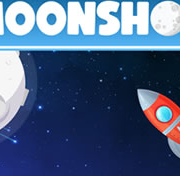Jupiter – Science Game
This science games helps children practice interesting facts about planet Jupiter. If you're wondering where Jupiter is, look no further! Jupiter is the fifth planet from the Sun, and is the largest planet in the Solar System. It's also a gas giant with a mass more than 2.5 times as much as all the other planets combined, but only a tenth the size of the Sun. If you're new to planets, this article will get you up to speed quickly. In addition to Jupiter's size, it has 53 moons, a magnetic tail, and a rock-and-metal core.
Jupiter is a giant planet
Did you know that Jupiter is a giant planet? The fifth planet from the Sun, Jupiter is the largest planet in our Solar System. Its mass is more than 2.5 times the mass of all the other planets combined. Yet, its mass is only one-thousandth that of the Sun. So what does that mean for us? The answer may surprise you! Listed below are some interesting facts about Jupiter. Hopefully, this information will help you to understand the planet better.
It has 53 moons
There are now over 53 known moons orbiting Jupiter. A new study published by the University of British Columbia says the number could be as high as 600. Most moons orbit Jupiter in a circular path, but a large number of them are irregular. Researchers have named many of Jupiter's moons after lovers, conquerors, and daughters of Zeus and Jupiter. The moons orbit Jupiter with relatively high inclinations, so they're most likely captured from the Sun's orbit.
It has a magnetic tail
Jupiter's magnetosphere, or outermost magnetic field, is almost four times as large as Earth's magnetosphere. The magnetic field is generated by the motion of material inside Jupiter's liquid metallic shell. The magnetic field of Jupiter is large enough to generate a permanent aurorae around the planet's poles, and its radio emissions are intense and variable. Scientists have observed Jupiter's aurorae across the entire electromagnetic spectrum, including visible light, ultraviolet and soft X-rays.
It has a rock-and-metal core
There are various theories about the composition of Jupiter's interior. Some scientists believe it is made up of solid material, while others suggest it's mostly a thick soup. Whatever the reason, the planet is thought to be composed of 71% hydrogen, 24% helium, and 5% of other elements. The rock-and-metal core is thought to be dense and composed of metals like iron.
It has a large atmosphere
The vast atmosphere of Jupiter is a complex mixture of gases. The thermal component of the atmosphere is thought to originate in the atmosphere's deep region. The deep atmosphere contains mostly hydrogen and helium, with the opacity due primarily to ammonia. Ammonia has a high absorption in the microwave spectral range. The composition of Jupiter's atmosphere is consistent with this model. However, more observational evidence is needed to fully understand its composition.
It has a differential rotation
Did you know that Jupiter has a differential rotation? When a solid body rotates at a single angular speed, the rest of the body rotates faster. But when liquids rotate, they do so at a different speed, which creates cyclones. These cyclones are areas of local high or low pressure. The spinning of liquids on Jupiter is caused by the Coriolis effect.
It has strong jet streams
NASA's Juno spacecraft has been circling Jupiter since 2016. It has captured breathtaking images of Jupiter's atmosphere, including the Great Red Spot and large jet streams. The Juno mission will continue to deliver new information about Jupiter and its atmospheric winds. Jupiter's atmosphere is very different from Earth's, with winds that extend deeper into the planet's atmosphere and last for much longer. While Jupiter's storms are smaller than Earth's, they're just as powerful.











